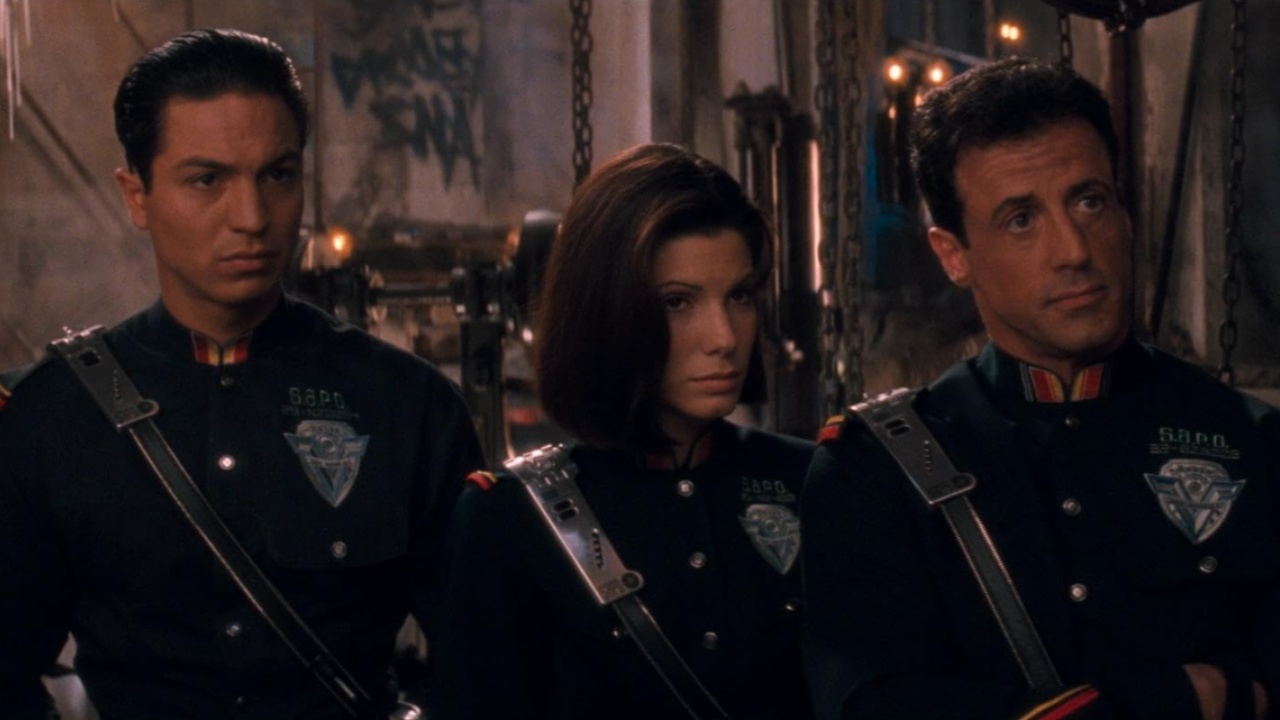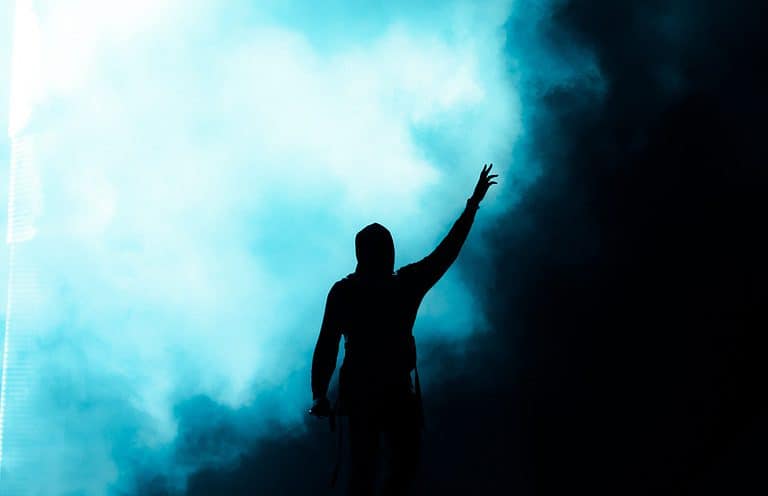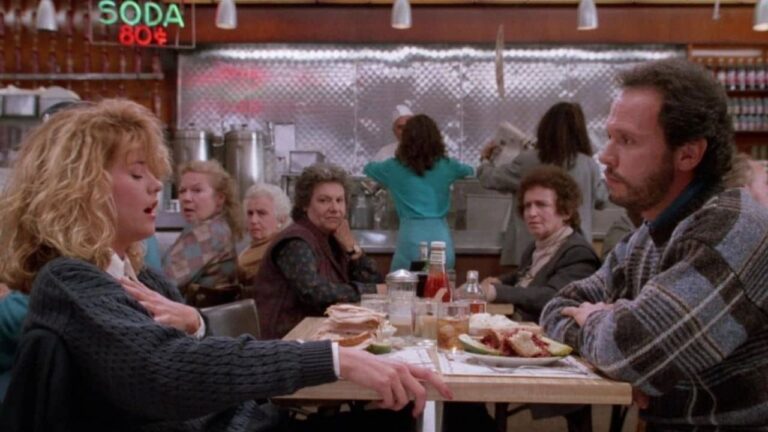24 Movies That Saw the Future (And Nailed It)

Everybody knows that the movies are made up, right? They exist to entertain and provoke, not to be realistic.
Be that as it may, a surprising amount of movies have portrayed reality. In fact, they portray a reality that wasn’t yet real, looking into the future to depict things we now take for granted.
Some of these movies intended to draw attention to problems in their own day. Others just wanted to tell an exciting story or make people laugh. But whatever their intentions, these films often come up when people talk about movies that manage to predict the future.
Idiocracy (2006)

Created by Mike Judge of Office Space fame, Idiocracy follows an unremarkable man (Luke Wilson) from the (then) present who gets frozen and wakes up 500 years later to discover that he’s the smartest person on Earth.
Although the central premise that dumb people have lots of kids and smart people have few kids wreaks of eugenics, Idiocracy pokes fun at a lot of things we have now or in the recent past, such as people who take commercials as the truth and those who support a reality TV star for President.
Network (1976)

Even non-cinephiles know about the opening to Network, in which anchor Howard Beale (Peter Finch) has a breakdown on live television and demands his audience wake up. What they may not know is how the rest of the movie unfolds.
Written by Paddy Chayefsky and directed by Sidney Lumet, Network shows how media companies use tragedy to their own end. Beale becomes an overnight sensation, as audiences tune in for entertainment, confusing it for information.
EdTV (1999)

Directed by Ron Howard and written by Lowell Ganz and Babaloo Mandel, EdTV first seemed like the dumber younger brother of The Truman Show, which came out a year prior. Today, however, EdTV seems the more prescient of the two stories about men who live their lies on television.
Where The Truman Show features a man who doesn’t realize he’s being filmed, EdTV stars Matthew McConaughey as someone who agrees to bare his secrets for fame and fortune. Just a few years after EdTV, reality TV took America by storm.
Metropolis (1927)

Metropolis might be almost one hundred years old, but it remains as relevant today as it was when director Fritz Lang adapted the novella by Thea von Harbou, who wrote the screenplay.
A classic of German Expressionism, Metropolis contains numerous striking images. However, its power comes from its depiction of a working underclass, whose labor allows the rich to live in luxury.
The Stuff (1985)

At first glance, the satire The Stuff, written and directed by Larry Cohen, is a product of its mid-1980s debut. It features a mysterious alien goo that a disreputable company markets to consumers as part of the health food craze.
Anyone who looks past the neon and lycra of The Stuff’s world will recognize qualities common today. People still sign up for crazy diets and follow fads, not knowing the source of the material. Unlike The Stuff, these fads don’t end with the user melting from the inside, but it’s still not good.
Brazil (1985)

First called 1984 1/2, Terry Gilliam’s dystopian satire Brazil contains many wry observations about the way fascism can take root in Western democracies.
However, its most enduring observation involves the technology used by Sam Lowry (Jonathan Pryce) and others in its bleak futuristic world. Written by Gilliam, Tom Stoppard, and Charles McKeown, Brazil depicts a world filled with ostentatious technology, which purports to make lives easier, but never works the way one hopes.
The Matrix (1999)

Most depictions of the internet in 1990s films got it very wrong, but not The Matrix. Within its endless cool and awesome kung fu battles, The Matrix shows the possibilities of cyberspace to create and shape new identities.
The Matrix comes from writers/directors Lana and Lilly Wachowski, who drew from everything from anime to the philosophy of Jean Baudrillard to create their world. In it, office drone Mr. Anderson (Keanu Reeves) uses the internet to transform into super-cool hero Neo, a fantasy repeated in cyberspace every day.
Simone (2002)

Although he often has excellent sci-fi ideas, writer/director Andrew Nicol sometimes struggles to bring them to life, as is the case with 2002’s Simone.
Whatever its cinematic shortcomings, Simone still works as a canny look at the future. Al Pacino plays filmmaker Viktor Taransky, who invents a digital actress (Rachel Roberts) to star in his film. Named Simone, the actress becomes a cultural sensation, foretelling the current crop of influencers on Instagram and TikTok.
Logan’s Run (1976)

One of the lesser high-concept sci-fi films of the 1970s, Logan’s Run takes place in a world in which people are executed when they reach the age of 30. How and why this makes for a good society isn’t ever explained (a trend that gets repeated in the YA dystopia boom of the 2010s).
However, director Michael Anderson and screenwriter David Zelag Goodman, adapting the novel by William F. Nolan and George Clayton Johnson, capture an obsession with youth and beauty that continues in media today.
The Terminator (1984)

Given the many overblown sequels that followed, it’s easy to forget how mean and stripped-down The Terminator is. Drawing inspiration from a nightmare he couldn’t shake, writer/director James Cameron tells a lean story about a robot from the future (Arnold Schwarzenegger) hunting the eventual mother (Linda Hamilton) of a resistance fighter.
Driving The Terminator is a vision of AI running amuck and turning against humans, a lesson that many businesses today choose to ignore.
2001: A Space Odyssey (1968)

As with The Terminator, 2001: A Space Odyssey depicts computers coming to life and killing humans. But that’s not the reason the Stanley Kubrick classic, co-written by the director and Arthur C. Clarke, makes this list.
2001: A Space Odyssey contains footage of something people do all the time: have video phone calls. While variations of video calls have existed for decades, the 2001 version most resembles Zoom or Facetime.
Contagion (2011)

When director Steven Soderbergh and writer Scott Z. Burns released Contagion in 2011, it seemed like more of a fantastic horror thriller premise than a work of realism. After all, no one at that time would have imagined that the world’s governments couldn’t handle a disease and allow it to spread across the globe.
Ten years later, Contagion plays like a documentary. If it didn’t have big-name actors like Matt Damon and Gwyneth Paltrow, Contagion could pass for news footage in recent years.
13. Her (2013)

Her comes from writer/director Spike Jonze, who made his name with surreal and moving films such as Being John Malkovich and Adaptation. Set in the near future, Her stars Joaquin Phoenix as introvert Theodore Twombly, who falls in love with his computer operating system (voiced by Scarlett Johansson).
Her avoids moralizing about Twombly’s relationship with a computer. That should make it a more palatable watch for those developing feelings for Siri on their iPhones.
Things to Come (1936)

Written by H.G. Wells, based on his novel The Shape of Things to Come, and directed by William Cameron Menzies, Things to Come offers a hopeful look at humanity rebuilding after disaster.
Although we don’t now live in the socialist utopia that Wells wanted, many aspects of Things to Come feel familiar, including worldwide peace movements and belief in scientific progress.
The Running Man (1987)

The Arnold Schwarzenegger vehicle The Running Man depicts a gameshow of the future, in which contestants fight it out to the death for prizes. Director Paul Michael Glaser and screenwriter Steven E. de Souza ignore most of the social commentary that Stephen King put in the original novel (written under the pen name Richard Bachman), which makes for a sillier watch.
However, the goofy set-pieces still feel similar to modern reality show competitions, in which people risk health and happiness to win fame and money.
RoboCop (1987)

Provocative Dutch filmmaker Paul Verhoeven found true kindred spirits in Edward Neumeier and Michael Miner, the screenwriters of RoboCop. Together, the trio took a cynical look at American culture, via a movie that played like a standard ‘80s action romp.
Within the pulpy action, RoboCop portrays big business trying to make the titular death machine (portrayed by Peter Weller) appear human and nice. For his part, RoboCop tries to recover his identity as Alex Murphy, mirroring a struggle between compassion and authoritarian duty that many in law enforcement experience.
Soylent Green (1973)

“Soylent Green is people” goes the famous reveal, shouted by Charlton Heston at the end of the film Soylent Green. Spoilers for a movie that’s over fifty years old, but the reveal refers to the secret ingredient in the most popular food in the nation.
The stomach-churning ingredient is just one of the issues that author Harry Harrison put in his novel Make Room! Make Room!, adapted as Soylent Green by screenwriter Stanley R. Greenberg and director Richard Fleischer. At its core, Soylent Green shows the results of mass inequality and the ineffectiveness of proper investigative journalism, both grim realities of the current day.
The Siege (1998)

No one would count The Siege among the best films by anyone involved, a high-concept political thriller directed by Edward Zwick and written by Lawrence Wright, Menno Meyjes, and Zwick. Starring Denzel Washington, Annette Bening, and Bruce Willis, the dour film depicts a state of martial law instigated in New York City after a series of attacks.
The creators drew inspiration from the Japanese Internment Camps where the U.S. government held even American citizens during World War II, warning that such a thing should never happen again. Three years later, 9/11 occurred and it did happen again, despite the warning of The Siege.
WarGames (1983)

As with most movie depictions of computers in the 1980s and early ‘90s, WarGames seems to confuse technology with magic, ascribing to the clunky machines even more than our current high-powered systems can achieve. But over the years, WarGames has become more realistic, thanks to its picture of global cybersecurity.
WarGames comes from director John Badham and writers Lawrence Lasker and Walter F. Parkes, and stars Matthew Broderick as a teen who hacks into the computers at the North American Aerospace Defense Command. Thinking he’s playing a video game, the teen almost drives America and Russia to World War III.
Minority Report (2002)

The underrated Steven Spielberg film Minority Report, written by Scott Frank and Jon Cohen from the PKD story, contains several aspects that were futuristic then and commonplace now. The cynical might point to the concept of “Precrime,” in which people get arrested for crimes they have not yet committed.
However, the more optimistic might point to the way Tom Cruise’s character navigates his computer through hand gestures, which have been implemented into modern interfaces for phones, tablets, and computers.
The Congress (2013)

The independent sci-fi movie The Congress passed by most viewers when it released in 2013, which got just a short theatrical run before going to video. Writer/director Ari Folman melds live-action and animation to bring to life Stanisław Lem’s novel The Futurological Congress.
The Congress seeks to critique the unrealistic standards that Hollywood places on women, and stars Robin Wright as a version of herself, who signs away her digital likeness for studios to use. Anyone who paid attention to the recent actor strike knows that this concern is very real now, as studios seek to use actors forever via digital stand-ins, never paying the actual performer.
Gattaca (1997)

Gattaca may not have quite the immediacy as writer/director Andrew Nicol’s other entry on this list, but it works much better as a complete film, while still introducing ideas that have become realities today.
Gattaca takes place in a future where scientists have mastered gene sequencing, allowing them to create children according to their parents’ wishes. Ethan Hawke plays an unsequenced person who seeks to exceed his class, by borrowing the identity of a paralyzed sequence person (Jude Law) who never met his potential. Gattaca portrays the type of genetic alterations that scientists explore today, while also highlighting problems with the practice.
Enemy of the State (1998)

A pseudo-sequel to Francis Ford Coppola’s thriller The Conversation, Enemy of the State uses anti-government paranoia as a launching board for a flashy ‘90s blockbuster. Will Smith plays a labor lawyer whose life is ruined over the internet when he becomes the target of insidious NSA agents.
Because Enemy of the State is a Jerry Bruckheimer production, director Tony Scott and writer David Marconi put exciting set pieces over any social commentary. However, no modern viewer will miss the similarities between the plight of Smith’s character and the practice of “doxxing,” leaking personal information on the internet to punish someone.
Demolition Man (1993)

Like RoboCop before it, Demolition Man can be dismissed as nothing more than an over-the-top action flick. Sylvester Stallone and Wesley Snipes play a cop and criminal, respectively, who wake up from cryosleep to continue their violent battle in the future.
The prediction aspect of Demolition Man, directed by Marco Brambilla from a script by Daniel Waters, Robert Reneau, and Peter M. Lenkov, comes in its relationship with violence. The film takes place in a world in which censorship of unpleasant imagery has become so common that people no longer know how to deal with upsetting truths, a common state of affairs on social media today.





